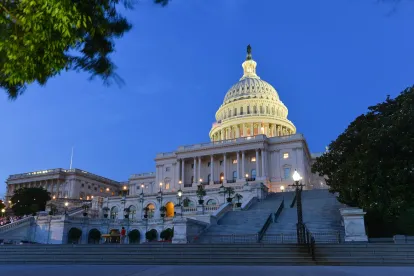Senate leaders have struck a historic deal, the largest rescue package in American history, to support the U.S. economy with approximately $2 trillion in aid in response to the coronavirus pandemic.
The legislation contains direct payments to Americans, an aggressive expansion of unemployment insurance, billions in aid to large and small businesses, and a new wave of significant funding for the health care industry.
Key provisions include:
-
Financial assistance to Americans with direct checks to households in the middle class and in lower income levels.
-
An extended unemployment insurance program extending benefits to laid-off workers that will allow for four months of full pay rather than the usual three months for most. It will also raise the maximum unemployment insurance benefit by $600.
-
More than $130 billion for the health care system, including funding for hospitals, research, treatment and the Strategic National Stockpile to raise supplies of ventilators, masks and other equipment.
-
$150 billion to state and local governments to address spending shortages related to the coronavirus pandemic.
-
$367 billion for small businesses impacted by the pandemic in the form of loans; some of those loans could be forgiven.
There are also provisions to ban stock buybacks for the term of government assistance plus an additional year for any company receiving a government loan from the bill. In addition, it establishes worker protections attached to federal loans for businesses and prohibits airlines from using the funds for CEO bonuses. Loans for distressed companies would come from a $425 billion fund controlled by the Federal Reserve, and an additional $75 billion would be available for industry-specific loans — including to airlines and hotels.
Under the plan, single Americans would receive $1,200, married couples would get $2,400, and parents would see $500 for each child under age 17. Payments start to phase out for individuals with adjusted gross incomes of more than $75,000, and those making more than $99,000 would not qualify at all. The thresholds are doubled for couples. Families would receive an additional $500 per child. About 90% of Americans would be eligible to receive full or partial payments. Qualifying income levels will be based on 2019 federal tax returns, if already filed, and otherwise on 2018 returns. (Treasury Secretary Steven Mnuchin earlier this month delayed the filing deadline until July 15.)
In sum, (1) The government will send direct payments to taxpayers; (2) unemployment benefits will grow substantially, and go to many more Americans; (3) small businesses will receive emergency loans if they keep their workers; (4) distressed companies can receive government bailouts — but with strings attached; (4) hospitals staggering under the burden of the coronavirus would receive aid ($100 billion for hospitals and health systems nationwide).




 />i
/>i

